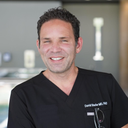Posted underAfrican American Rhinoplasty q&a
Can a Wide Dorsal Part Be Slimmed Down by Shaving It Down Without Breaking the Bone?
I'm African-American and thinking of getting rhinoplasty. I have a slightly wide bridge and a slight hump on my nose, which I hate. I want to slim the bridge part of my nose without tip work, but i also dont want to have my nose broken to slim it. Is it possible to just shave down the bridge part of my nose without breaking the bone (osteomy), and still make it look natural? And if the bone is broken, will it ever heal enough to become as strong as it was before the surgery?
Answers (16)
From board-certified doctors and trusted medical professionals
Dr. Jeffrey Epstein, MD, FACS
Hair Restoration Surgeon, Board Certified in Facial Plastic Surgery
Answer
More African American Rhinoplasty Questions
See all African American Rhinoplasty Q&AWE SEND PRETTY
EMAILS
What’s trending? Who’s turning heads? Which TikTok myths need busting? We’ve got you. No fluff, no gatekeeping—just real talk. Get our free, unfiltered newsletter.




